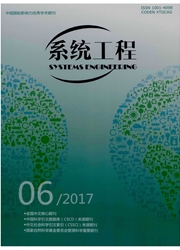

 中文摘要:
中文摘要:
为探究"后长协时代"中国在国际铁矿石贸易中的买方市场势力状况及其与出口国卖方市场势力间的差距,以中国和澳大利亚为研究对象,基于剩余需求弹性理论构建中澳两国铁矿石国际贸易买卖双方局部均衡模型,并运用相关历史数据进行实证研究。结果表明,中国的买方势力(50.40%)略低于澳大利亚的卖方势力(56.82%),但中国买方势力的有效提升促成了买卖双方市场势力对等的新格局,改变了长期的卖方单边垄断地位。最后根据研究结果对提升中国在铁矿石国际贸易中的买方市场势力及价格控制力提出了相关建议。
 英文摘要:
英文摘要:
This paper studies the situation of China's importing market power in international iron ore trade and the gap between China's importing power and exporter's exporting power during "Post Long-term Pricing Era". It chooses China and Australia as research objects, establishes a two-country partial equilibrium trade model of China and Australia based on residual demand elasticity theory and carry on empirical analysis according to the historical data. The results show that China's importing power (50.40%) is slightly lower than Australia's exporting power (56.82%), yet the improvement of China's market power has led to a more balanced market pattern of importers and exporters, which alters the long term one-sided monopoly position of exporters. At last some suggestions have been put forward to improve China' s market power and price-controlling power in international iron ore trade according to the research results.
 同期刊论文项目
同期刊论文项目
 同项目期刊论文
同项目期刊论文
 期刊信息
期刊信息
